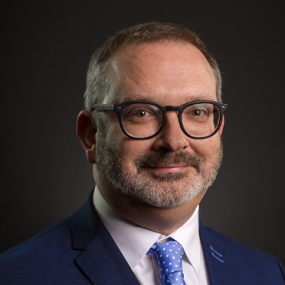- Bulletin: Spring 2025
- Editorial
From the Editor
Dr Jon Chambers welcomes us to spring's issue which clearly demonstrates how our specialty continues to rise to meet the challenge of change.

I’m hoping that by the time you read this issue, spring will have finally sprung. Fortunate as I am to live in the Dorset countryside, the changing seasons are an ever-present sign that nature never stays still regardless of what else is going on around it.
Change is inevitable and, as we wait for the latest NHS reorganisation to bed in, it is important to reflect on how we can best shape our future as a specialty while learning from the good of the past alongside an honest assessment of our present. Within this training issue we have articles that cover each of these three stages, and I believe that they clearly demonstrate how our specialty continues to rise to meet the challenge of change.
Many of us remain in awe of those we remember as compassionate and talented teachers and supervisors. Also, for many of us the transition from trainee to trainer was an unexpectedly steep learning curve. How can you make an operating list efficient, patient-centred, and yet a useful training experience? Dr Sarah Muldoon addresses this quandary in her article, and reflects that training has to be patient-centred both for that patient on that day and with consideration of the future patients for whom today’s resident will be the future consultant.
My hope is that, for the majority, developing a career in anaesthesia remains a rewarding experience. That said, where challenges arise the specialty needs to remain accessible to all. In this issue we have two articles reflecting on how training can be impacted without the correct support. Firstly, Dr Ruth Bennet and Dr Eimear McClenaghan have written a thought-provoking article on dealing with a recent dyslexia diagnosis. They challenge us all to remember that understanding, flexibility, and compassion can make all the difference. Secondly Dr Juleen Fasham, Dr Sarah Wimlett and Dr Rosada Jackson present their survey results on the challenges of parental responsibilities in resident anaesthetists. Their data is sobering and is a must read for all residents and their supervisors.
Finally, at the College we are often challenged as to why recruitment, the training programme and exams look and work as they do. How do we know we have got it right? Dr Lewis Hendon-John, Dr Chris Carey and their team are attempting to answer that very question. Their article introduces us to their groundbreaking study which looks to follow the 2024 CT1 anaesthetic cohort (ACCS CT2) from the start of their training through to CCT. This study is the first of its kind in the UK, and it will provide valuable information about the impact and effectiveness of different elements of the training programme.
I commend this training issue to you. I‘m yet again astounded by the breadth and quality of the articles submitted. They describe a specialty that is keen to retain the good of the past, acknowledge and address today’s challenges, and is focussed on developing a service fit for the future – one that is better for us, for our colleagues and for the patients we care for.
Would you like to read more articles from this Bulletin?
